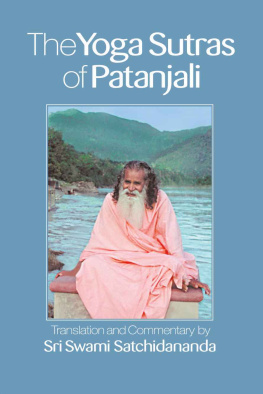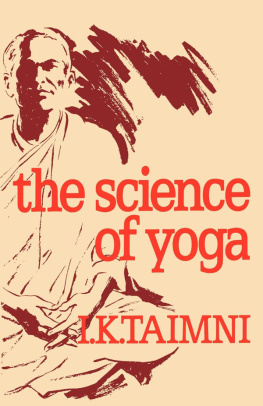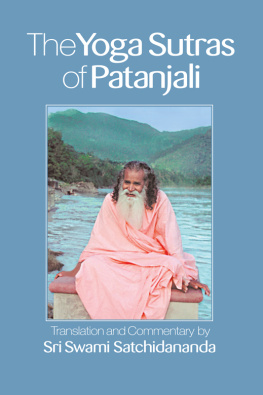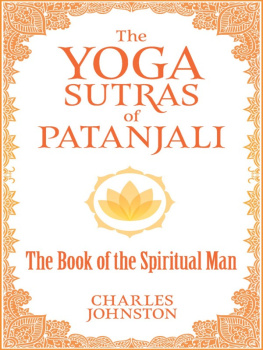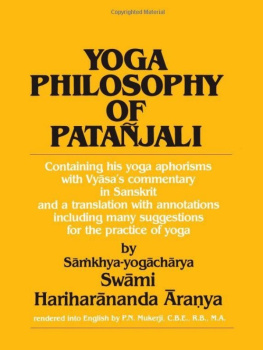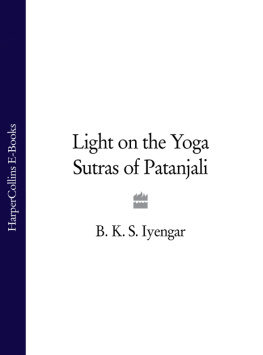Yoga Sutras
A Modern Guide to Discovering Teachings, Principles and Practices of Yoga Sutras of Patanjali
Copyright 2020 by Avaya Alorveda.
All rights reserved.
This document is geared towards providing exact and reliable information with regard to the topic and issue covered. The publication is sold with the idea that the publisher is not required to render accounting, officially permitted or otherwise qualified services. If advice is necessary, legal or professional, a practiced individual in the profession should be ordered.
-From a Declaration of Principles which was accepted and approved equally by a Committee of the American Bar Relationship and a Committee of Publishers and Relationships.
In no way is it legal to reproduce, copy, or transmit any part of this document in either electronic means or in printed format. Recording of this publication is strictly prohibited, and any storage of this document is not allowed unless with written permission from the publisher. All rights reserved.
The information provided herein is said to be truthful and consistent, in that any liability, in terms of inattention or otherwise, by any usage or abuse of any policies, processes, or directions contained within is the solitary and utter responsibility of the recipient reader. Under no circumstances will any legal responsibility or blame be held against the publisher for any reparation, damages, or monetary loss due to the information herein, either directly or indirectly.
Respective authors own all copyrights not held by the publisher.
The information herein is offered for informational purposes solely and is universal as so. The presentation of the information is without a contract or any type of guarantee assurance.
The trademarks that are used are without any consent, and the publication of the trademark is without permission or backing by the trademark owner. All trademarks and brands within this book are for clarifying purposes only and are owned by the owners themselves, not affiliated with this document.
Table of Contents
Introduction
T he YOGA SUTRAS of Sri Patanjali is the study of delight and an outline for carrying on with a profoundly fulfilling life. It is an immortal spiritual exemplary whose intrigue is established on a significant and unerring comprehension of the human condition. Not just a way of thinking, it presents an all-encompassing arrangement of practices that give away from ventures towards the end of torment and success of profound freedom. These lessons reach past age, occupation, sex, and faith convention. They contact the core of the battle to discover harmony in the midst of a universe of vulnerabilities and challenge. They intensely announce that the delight we look for is inside us, as none other than our True Identity.
The Cosmic Drama: What You Perceive Is What You Believe
Everything starts in the psyche. If you need to see obviously, you need clear vision.
Sri Swami Satchidananda
"Recognition is the truth" is a proverb understood by marketing specialists and advertisement administrators. They get thatexact or notwhat we see to be genuine decides our reactions. Envision strolling into a faintly lit room. As we glance around, we notice a wound shape in a corner. A snake! Our heart pulsates quicker. Breathing gets fomented. Adrenaline fills the circulatory system. Our psyche wildly looks for the best possible game-plan: Should we run, call 911, shout for help? Dread based musings more than once interfere with reason: What if it's harmful and I get nibbled? Who will think about my kids if I pass on! At that point, instinctually, we go after the light switch. Light has the ability to dis-close the secrets composed by shadows. There is no snake; there never was. What we thought was a snake was only a curled bit of rope. Though we were never in any peril, by dishonestly seeing the rope for a snake, we encountered similar contemplations, physiological reactions, and activities as though it were a snake. Our impression of the snaked rope in the diminish light becamefor some timeour world.
Discernments become the premise of conviction frameworks, and conviction frameworks, paying little mind to how unobtrusive and modern, resemble channels that permit certain bits of information to go through while blocking others. We may accept that an adoring, tolerant God exists, that human instinct is inherently acceptable, that the motivation behind life is to serve others, that heavenly attendants exist, that the approaches of our own ideological group are best for the nation, that an apple daily fends the specialist off, that righteousness is its own prize, and that better safe than sorry. Be that as it may, what components of truth may these convictions channel? Are these convictions just somewhat obvious? Would they be able to be totally bogus? What number of snaked ropes does our conviction framework contain?
Look at the "real factors" that characterize your life. How have presumptions, past encounters, expectations, and fears shaped your universe? Do you see a no nonsense world, or does life take after a bowl of fruits? A futile way of life or a luxurious situation? Is the world a perilous spot or a Garden of Eden? If you get up each morning to find that you are amidst a futile way of life, enormous hurrying rodents will populate your reality. It follows that if you see the planet as gagged with ferocious exercises, it will be necessary for you to "pay special mind to Number One" and watch your back. Life will be a distressing encounter. Then again, if you see a Garden of Eden outside your window, happiness and satisfaction will encompass you.
For a large portion of us, life includes swinging from a proportion of substance and security to bitterness, anxiety, and dread. Our experience of life relies upon how we see the happenings existing apart from everything else. If everything is by all accounts continuing as indicated by our arrangements, we see daylight and paradise; if our arrangements don't occur to coordinate what life permits, presence can take on unpleasant shades.
Swinging to and fro from glorious to repulsive encounters is itself a wellspring of affliction. We stick to pleasurable encounters while attempting to get away from painful ones. The individuals who feel worn out on the tenacious and capricious good and bad times of life contain most of spiritual searchers. Others are attracted to profound life since they are dissatisfied or baffled with probably some part of life. Despite the particular reasons, the initial moves toward spiritual life are frequently persuaded by some proportion of discontent, weakness, or anxiety. Prickly questions follow this unsettling: Is there something more to life? Something deeper and all the more satisfying? What is the genuine idea of life, and is there any reason or significance to it? Do we need to endure? For what reason would we say we are conceived? How and where does God fit into the whole of this? Does God even exist?
The responses to these questionsand then somecan be found in the YOGA SUTRAS.
The lessons and practices of the YOGA SUTRAS depend on three standards:
Suffering isn't brought about by powers outside of us however by a defective and constrained impression of life and of what our identity is. Our fundamental misrecognition offers ascend to unlimited longings for sense fulfillment. Since everything known to mankind is continually changing, nothing in Nature is equipped for bringing enduring satisfaction.
The steadfast harmony we look for is acknowledged by encountering the boundless and interminable Peace that is our True Identity. In spite of the fact that darkened by numbness, it exists inside us, standing by to be uncovered. This experience is edificationSelf-acknowledgment.


